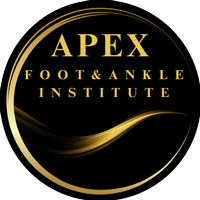Cutting-Edge Minimally Invasive Bunion Surgery
Minimally Invasive Bunion Surgery
Minimally invasive (MIS) or percutaneous bunion surgery has become more and more common in foot and ankle surgery; however, this type of surgery procedure needs to be done by experts with extensive knowledge of MIS surgery.
Dr. Ryan M. Sherick is a leader in Minimally Invasive Surgery Techniques and is found often speaking as an expert on the subject locally, nationally, and by teaching surgical hands-on seminars to other surgeons/residents/fellows/medical students across the nation to learn and advance their surgical skills in MIS foot and ankle surgery techniques.
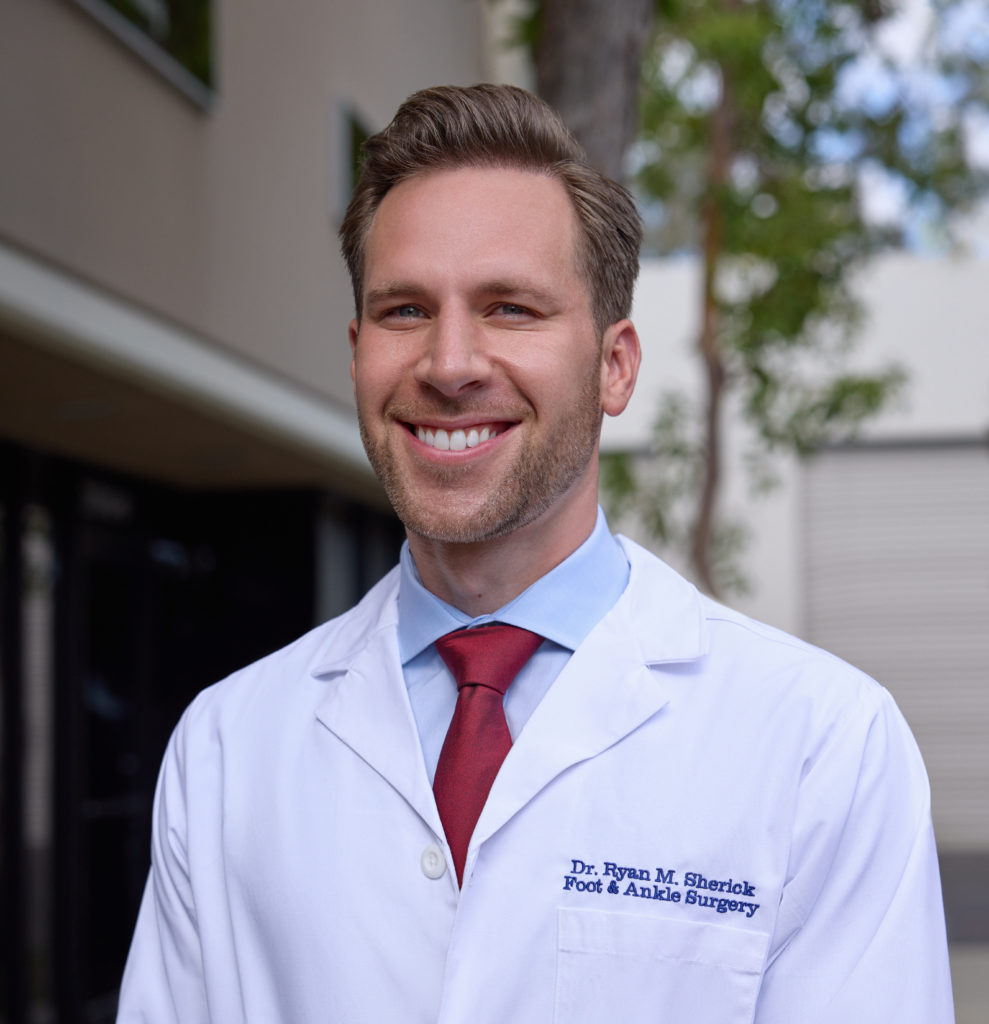
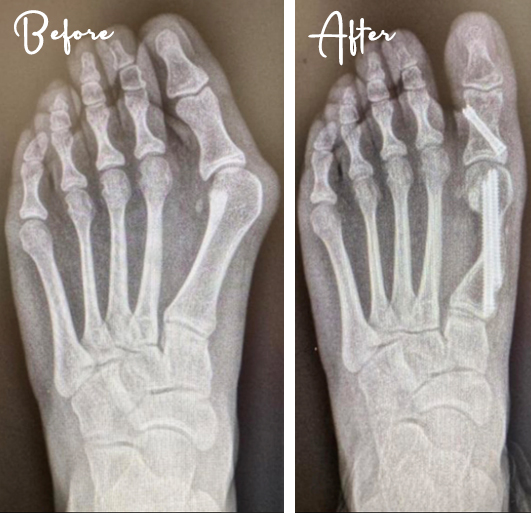
Dr. Ryan M. Sherick is a surgical leader on the forefront of advancing Minimally Invasive Bunion Surgery by designing his own minimally invasive bunion surgical device that allows other surgeons around the country to perform his Minimally Invasive bunion procedure with consistent results.
Recent advancements in MIS bunion surgery now offer patients unrivaled success due to limited destruction to the soft tissue envelope during surgery with “poke holes”, thus preserving blood supply.
Furthermore, there have been advancements to enhance methods of stabilization, leading to quicker recovery, immediate weight-bearing, and virtually no post-op pain or scarring compared to any previously available minimally invasive bunion surgery.
What are the common symptoms of
a bunion (hallux valgus)?
As the bunion bump rubs against the shoe, the resulting pressure causes the overlying soft tissue to thicken. Redness, pain, calluses, and inflammation develop from constant shoe compression and friction. These symptoms can alter the way you step and cause the abnormal load to be placed on two tiny bones (the sesamoid bones) underneath the first metatarsal head. This can lead to arthritis and a restricted range of motion at the toe joint.
With nothing to stop them, most bunion deformities progress over time. Bunion pain and arthritis typically worsen, and patients can also develop corns between the first and second toes and even clawing of the second toe due to crowding from the big toe. They can also make existing conditions like plantar fasciitis worse and create new ones like a hammertoe, to name just a few.
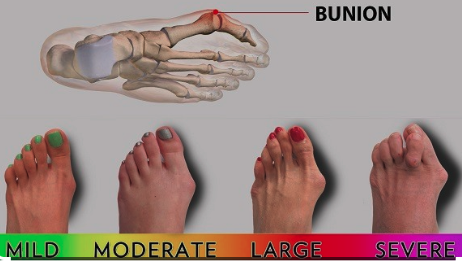
What causes bunions?
There are a number of factors that can cause bunions. The most common include:
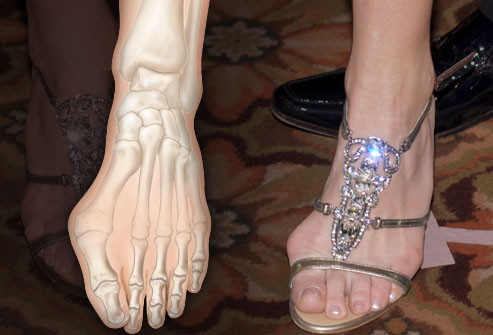
What if I do nothing about my bunion?
Early-stage bunion deformities will almost always get worse over time.
Common Complications of not treating your bunion or ignoring your bunion include the following:
Why are there so many types
of bunion surgery?
While there are over 100 different kinds of bunion surgeries described in the medical and podiatry literature, very few have stood the test of time. One thing that has been proven over the years is there is no “one size fits all” bunion surgical technique. That said, you’d be surprised to know how many bunion surgeons perform only one type of surgery because that’s their only comfort level.
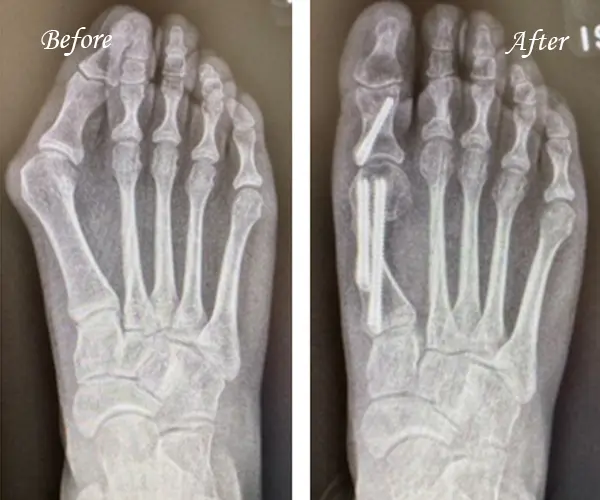
For years, foot and ankle surgeons have been performing what’s known as traditional minimally invasive bunion surgery that features a tiny incision. Unfortunately, most don’t use any hardware to secure the re-positioned bone that’s required to correct a bunion. Without hardware fixation, the bone may slip out of alignment, requiring the patient to return again, but this time for another more invasive bunion surgery (called a bunion revision). Dr. Ryan M. Sherick is skilled and experienced with bunion revision surgery, and utilizes fixation to ensure stability while still maintaining an aesthetic outcome with resolution of your bunion deformity.
What makes our minimally invasive
bunion surgery ideal?
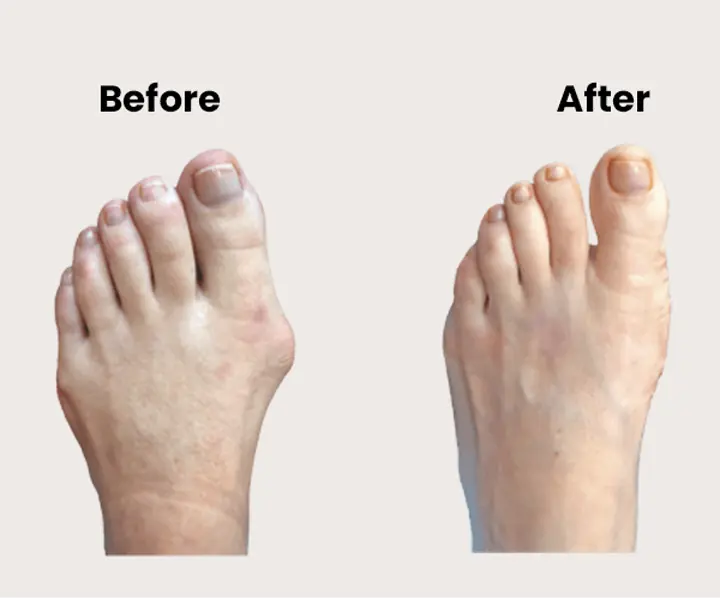
How does our minimally invasive
bunion surgery work?
Tiny micro-incisions, just a few millimeters long are made at the targeted positions of the foot. This is in great contrast to the 2-6 inch incisions made in traditional bunion surgery which open the great toe joint resulting in stiffness, scarring, and the risk of difficulty wearing all types of shoes. Guided by an x-ray, a specialized instrument is used to shave the bone at the joint and insert two stabilizing screws. The procedure realigns the metatarsal and toe bones and causes little or no scarring.
Benefits of our minimally invasive bunion surgery?
Advantages of our Minimally Invasive Bunion Surgery include:
What is the recovery from minimally
invasive surgery (MIS)?
A key benefit of our minimally invasive surgical procedure is that it enables an immediate walking recovery. As the joint is not opened, our patients have little to no joint stiffness post-surgery and require far less physical therapy.
Another huge advantage of minimally invasive bunion surgery is that our patients have minimal pain during recovery because the incisions are very small and the soft tissue is not opened extensively. Furthermore, screws hold the re-positioned bones firmly in place during healing. Less bone micro-movement and small incisions mean less pain during recovery. In fact, hardly any of our patients require more than a day or two of minor narcotics pain killers after surgery: most just ice and elevate their foot and take Tylenol.
Full recovery is usually accomplished after 4 to 6 weeks in the postop boot or shoe. The need for physical therapy is often minimized or eliminated altogether. All of this adds up to an earlier return to normal daily activities as compared to traditional bunion removal approaches.
Our minimally invasive bunion surgery,
a practically perfect process
Although our minimally invasive bunion system may not be optimal for larger bunions or patients with very loose joints, it is ideal for a large majority of bunion deformities and we can help you make the correct procedure choice to fix your bunion.
If you are experiencing bunion pain, we encourage you to schedule a consultation with Dr. Ryan M. Sherick to see if our minimally invasive bunion procedure is right for you.
Why choose Apex Foot and Ankle Institute for minimally invasive bunion surgery?
If you are experiencing bunion pain or are considering bunion surgery, we encourage you to schedule a consultation with Dr. Ryan M. Sherick our bunion surgery expert to see if his minimally invasive bunionectomy surgery is the right bunion correction treatment option for you. We’re always here to help and assist you even if wanting to hold off on surgical options. Dr. Ryan M. Sherick will formulate and go over a patient-specific post-operative bunion surgery plan with his patients to optimize your outcome potential. Dr. Sherick will consider each patient’s specific bunion anatomy, foot type, lifestyle, medical conditions, and bunion treatment expectations + goals to customize your positive bunion treatment experience at Apex Foot & Ankle Institute based in Thousand Oaks, California.
Our nationally recognized board-certified, and fellowship-trained foot and ankle specialist and bunion surgery specialist Dr. Ryan M. Sherick offers the most advanced foot and ankle care and the highest success rates by treating you as if you’re a part of his very own family.
For more information or to schedule a consultation, please call (805) 904-0476 or make an appointment online now.
Dr. Ryan Sherick is a Fellowship-trained Foot & Ankle Surgeon proudly providing cutting-edge minimally invasive foot, ankle and lower extremity surgery to the following areas: Thousand Oaks, Westlake Village, Agoura Hills, Malibu, Calabasas, West Hills, Chatsworth, and the entire Conejo Valley, San Fernando Valley, Santa Rosa Valley, and greater Los Angeles area.

